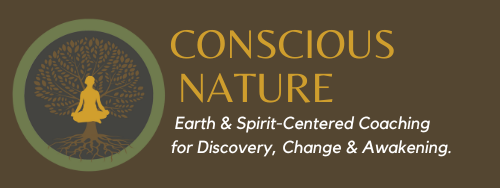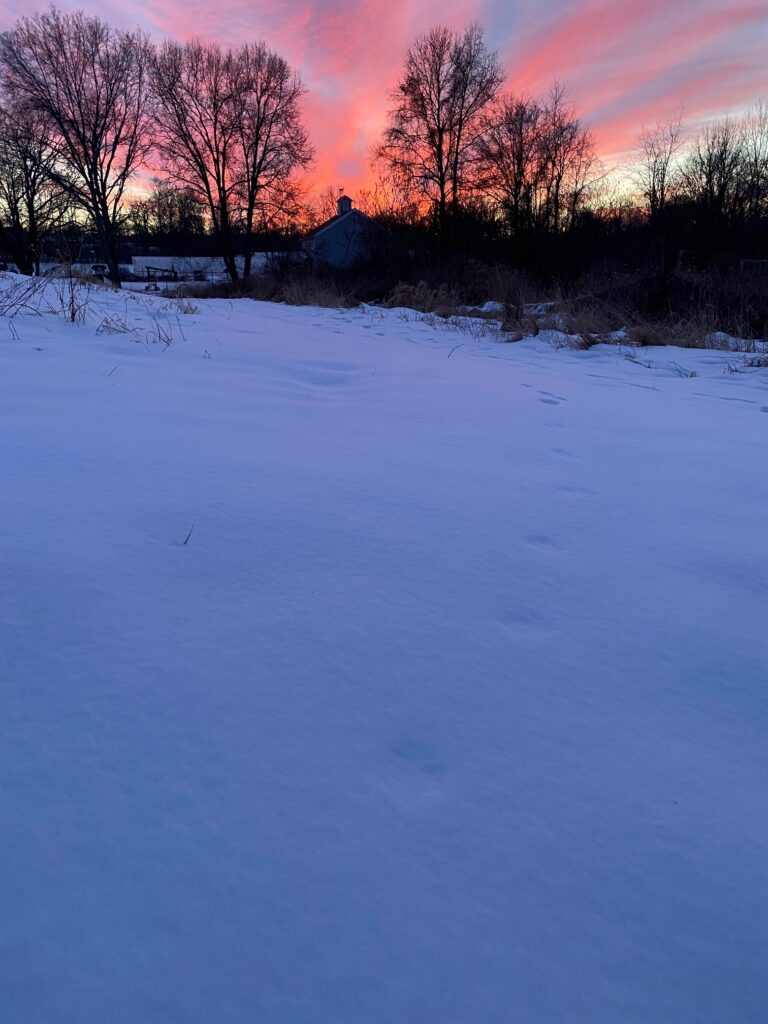
Winter wildlife tracking is a fun way to engage your senses and discover the secret lives of the animals in our backyards, parks, and favorite outdoor spots. If you live in or visit a place with snow in the winter, it’s a great time to get out and connect with the landscape though the tracks and trails left by your wild neighbors.
Tracking invites us into the moment as we step into the world of the animals. As we mindfully explore Nature, we can experience and cultivate the Three Inner Conditions of Awareness. The mysteries waiting for us in the snow draw us into present-time with fresh perception and curiosity…
Learn how to get started with mindfully tracking and trailing animals in the snow.
In this article, explore:

The 3 Inner Conditions of Mindful Tracking

Condition 1: Cultivating Presence
The first condition of tracking is learning to cultivate moment-by-moment Presence. The more we are present, the more fully we can appreciate the richness of information coming into our senses. By simply making space to explore the landscape through each sense, we open a space for deeper connection and engagement. Check out my 4-Part Meditation process for an effective way to cultivate this aspect of tracking.
Curiosity and wonder are natural forces that bring us into the moment again and again. Nature excels at offering endless curiosities, especially amidst the beauty and contrast of the winter snow. When you get out to enjoy the winter landscape, invite yourself to follow any curiosities that arise. Just be there in the moment and soak it all in!

Condition 2: Skillful Observation
As we direct the leading edge of our attention through intentional presence, we shift into the next stage of tracking: Observation.
Observation invites us into the unique mystery of the moment, opening different lenses of perception that lead to a greater appreciation of the whole.
There are a variety of observation skills encompassed within the larger art of Tracking, such as telling when a track was made (track aging), determining who left the track (track identification), and unraveling what the animal did (interpretation). Each of these arts brings a certain quality of attention and understanding to the practitioner; each requires specific observation strategies. Through these practices we “wake up our neurobiology” by engaging different networks in the brain and sensory system.
Condition 3: The State of Attunement
Ultimately, Presence and Observation leads the Tracker towards the third condition of tracking, Attunement.
Here, tracking just “happens” as a state of Being With the tracks. In this state, the cultivated attention has been refined through the experience gleaned through many previous observations.
The attuned Tracker knows where and what to look for. Yet, the attention remains open to a larger sphere of possibility beyond the usual or expected. A sense of resonance and deep intuitive interconnection with the tracks, the animal, and the landscape may arise in this state.
The snow provides a fun and accessible substrate for making new observations and attuning with Nature’s patterns. Explore winter tracking and build your personal connection with different animals through their tracks and trails.
In the next part of this article, read on to learn more about the art of snow tracking, and the mysterious happenings above and beneath the snow.

Finding the Best Conditions For Winter Wildlife Tracking
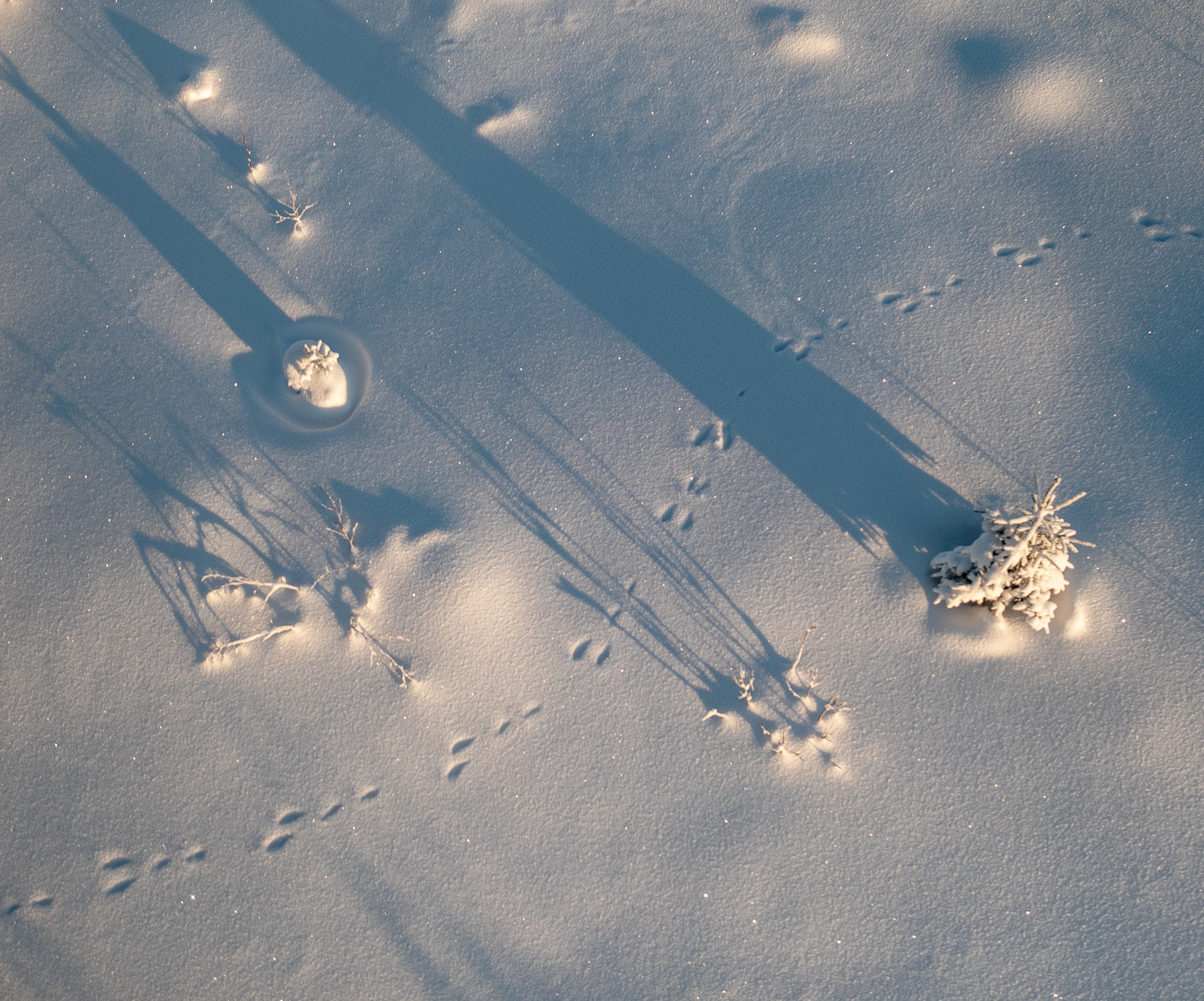
It can take a little bit of time after a good snowfall for the landscape to come alive with fresh footprints. Tracks left while the snow is falling may be covered over by the time the storm passes. If it snows into the night, many nocturnal or crepuscular mammals (that move at dawn or dusk) will simply hunker down during a heavy snow fall, waiting for clearer conditions to begin foraging and hunting.
Therefore, the best snow tracking conditions often happen not the very next morning after a snow, but the morning after that. This gives mammals a night of calm weather to get on the move and leave a variety of fresh signs to follow.
That said, these are not hard and fast rules and there can be many tracks to find even while the snow is still coming down (plus you can then age the tracks by considering how much snow has fallen in them since they were made!). Diurnal mammals such as squirrels, for instance, will leave plenty of tracks to follow.
Tracking & Trailing Mammals In the Snow
One of the gifts of the snow is the ability to easily trail a single mammal for some distance. With each footprint, the tracker gets a deeper glimpse into the world of the animal and its home on the land.

Photo by Birger Strahl on Unsplash
Winter Wildlife Tracking – Observation Skill: Practicing Track Identification
Snow trailing offers the chance to hone the practice of identifying who left the track.
Start by counting the number of toes in the track, and checking whether claws are visible or not. Each mammal family has a unique pattern to the number of toes that tend to register on the front and rear feet. Getting a toe count on the front and rear tracks is a beginning step in narrowing down who could have made the track.
For instance, members of the Cat family have five toes on the front feet but tend to only register four of these, because the fifth toe is a “dew claw” situated higher up on the foot. The hind foot of a cat registers four toes. Claws are often retracted and generally do not show, though they may at times in deep mud or snow.

Many mammals register claws, some tend not to. Gathering this basic information can help you to more effectively look up the tracks in a field guide. Here are some other essential observations to make:
- Compare the size of the track with that of animals you are familiar with, such as a dog or cat, as a starting place for theorizing who might have left the print.
- Take measurements of the overall length and width of track to compare in your favorite field guide. Draw a sketch of the track to deepen your observation of the print’s unique shape and proportions. Take a photo of the track next to a ruler for easy reference later.
- Examine the habitat the tracks occur in as a clue for identification.
- Try to come up with a few possible candidates based on these criteria, and compare what you see with examples in the field guide.

The Beginning of a Journey
These basic track observations are the first aspects of the 9 Step Diagnostic Questioning Process that I guide clients through in The Tracker’s Journey 1-to-1 Mentoring training. With practice, observations occur rapidly as a tracker assesses clues. The mentoring processes guides a tracker in internalizing the many subtle signs and indicators that support track and habitat assessment, one step at a time.
With practice, one can learn not only to pinpoint exactly who made the track, but also how to recognize front tracks from rear tracks, and left from right. With more observation, a tracker can discern amongst certain species if the tracks are from a mature male versus a female or younger individual, based on the track morphology and movement pattern. At times, injuries and unique movement styles may also show up that help identify specific animals.
Winter Wildlife Tracking – Observation Skill: Following the Trail
A clear string of tracks make great conditions for interpreting the animal’s motion through gait and behavior analysis.
By following the trail, the tracker encounters new clues that help clarify who made the track and what conditions are driving the animal’s behavior. A clear print here, and a feeding sign there… and gradually, a richer picture emerges of a majestic wild being in motion.
While trailing, notice the habitat preferences of the animal and the terrain contours that it moves across.
Does the animal cross open areas, or hug edges? Does it prefer forest interiors, or will is it making forays into open meadows and edge areas? How does it relate to the high ground or the low ground?
As you follow a particular trail, observe any interactions or associations this animal may have had with the tracks of other species. What other animals are present along the trail? What might their presence (or absence) tell you about the animal’s life?
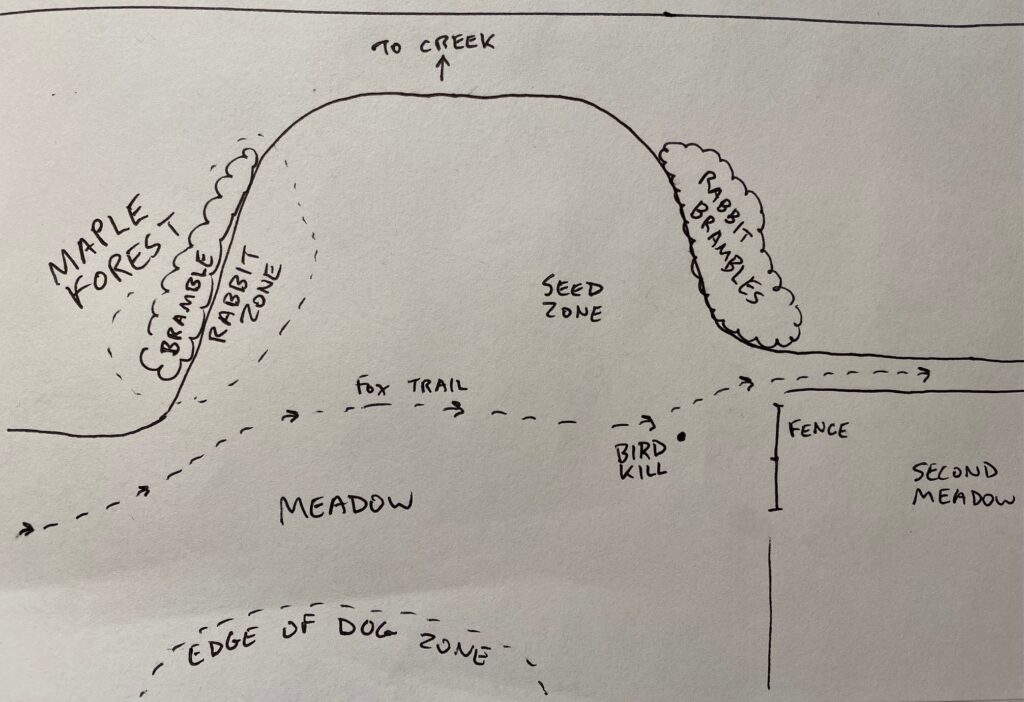
Winter Wildlife Tracking: Following a Red Fox
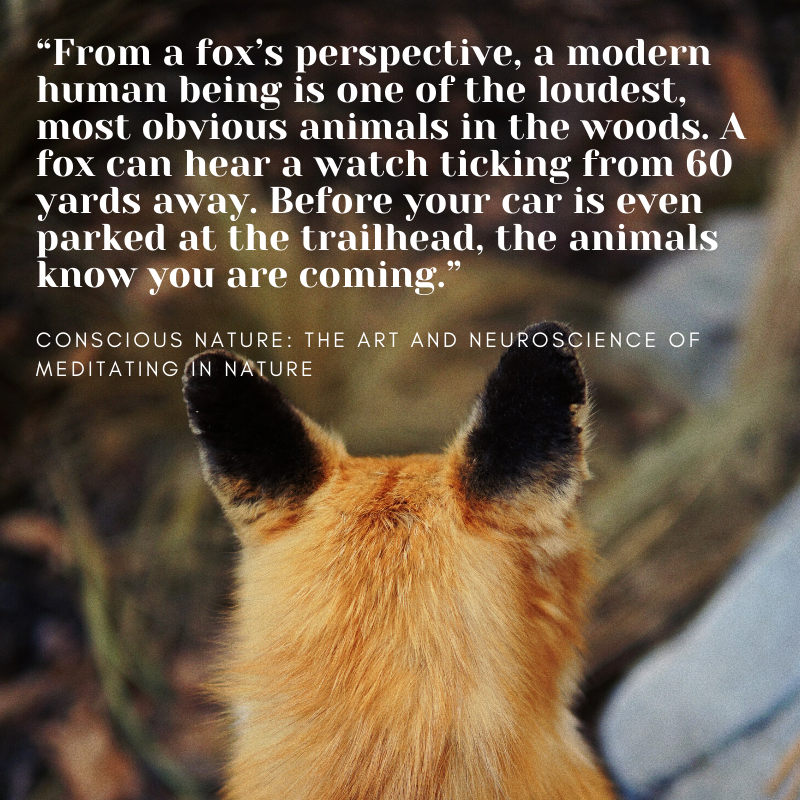
During a recent winter wildlife tracking outing, I observed how a red fox had lithely trotted from one pocket of deciduous forest to another across an open meadow. The trail crossed a number of rabbit feeding areas that hugged the bramble thickets along each forest edge, while skirting around the core territory of a pair of dogs that lived in a nearby house.
A bit further into the meadow perimeter, sparse stands of various plant skeletons poked out of the icy snow, offering clusters of seeds that attracted in juncos and other ground-feeding birds.
Following the paired sets of front and hind tracks that indicated a unique canine gait pattern side trot, the fox’s trail led me towards one of these seed feeding areas, and directly to a recent kill – the matted feathers showed where the fox had mouthed the bird’s wing before separating with its carnassial teeth and carrying off the meat.
A World Beneath the Snow – The Subnivean Zone
Meanwhile, beneath the snow, hidden out of sight from the passing glance of the casual observer, an entire world of activity is occurring. Wildlife biologists call this hidden world the “subnivean zone” (as with many scientific terms that can at first seem mysterious, the word actually describes what it is applied to – in this case, from the Latin for “beneath the snow”).
A Microclimate Between Soil and Snow
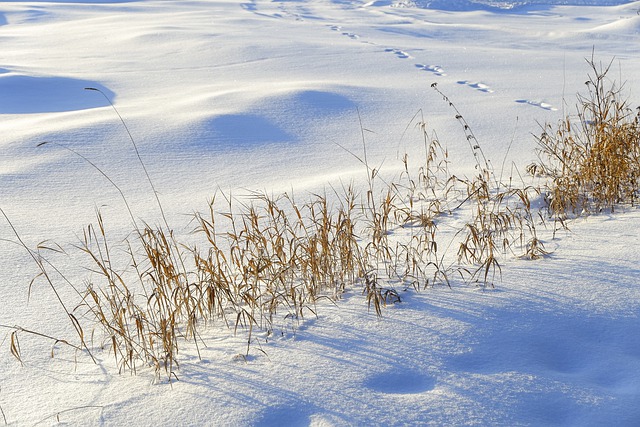
It might appear that the snow is just a homogenous covering over the ground, acting as a complete barrier to movement. Yet, as snow accumulates, the stems of grasses and other plants are pressed downwards, bending and creating pockets of empty space.
The warmth from the earth causes some of the snow at the bottom layer to turn to vapor, which then rises and hits the cold upper layers of snow, forming ice crystals and further enlarging the pockets of open space beneath the snow roof. This creates a situation protected from wind and extreme cold, maintaining a consistent temperature fairly close to 0 degree Celsius (32 degrees Fahrenheit).
The idea is similar to the way a Quinzee shelter functions; this is a survival structure that is basically a big pile of snow that is allowed to condense and coalesce, and is then hollowed out to create a small, sheltered sleeping space heated by body warmth and a candle. Nature provides many insights such as this that can help us to survive and thrive, if we pay attention. Winter wildlife tracking provides a doorway to these kinds of discoveries for the careful observer.
Winter Wildlife Tracking: A Vole’s World
The vole, a small rodent of meadows and forest floors, is a prolific character in the subnivean world.
Trotting endlessly between between ground level foraging spots in search of stems and roots, supplemented by above snow forays to browse on the inner cambium of apple and other tree barks, voles leave a complicated tunnel network under the snow.
Peering under the snow layer, one might find their latrine chambers filled with tiny scat and urine marks, feeding spots with small piles of clipped vegetation, and nest spots of warm insulated material.
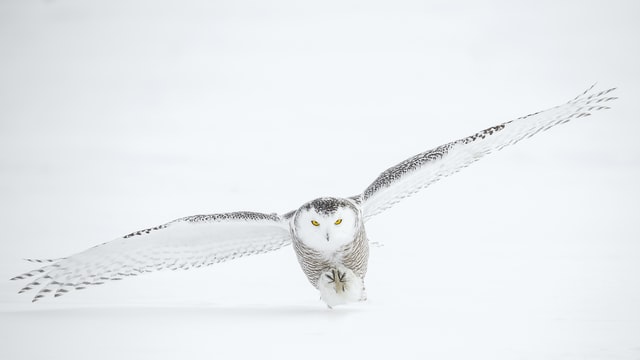
As hidden and protected as the world beneath the snow is, the movements of its citizens may still be detected by surface dwellers in search of a warm meal. Track in soft powder long enough, and eventually you may find the soft wing marks of an owl gently touching down as talons rip through the snowy roof, guided to a hidden vole by laser-precision hearing. Or follow a fox’s trail and discover the marks left by a high pounce into the air, followed by snout and forefeet crashing downwards upon a rodent of choice.
Tracking Is a Journey of Mindful Sensory Awakening
These and other dynamic interactions are waiting for you in the tracks, trails, and layers of the winter snows. Wildlife tracking is a lifetime practice that invites us into the moment with each twist and turn of the trail. Through cultivating the mindful sensory presence of the Tracker, we make ourselves available and receptive to notice countless mysteries unfolding, whether in the touch-down of a fox’s foot, or the soft wing-beat of the owl.
Get out this season for a winter wildlife tracking excursion and discover the winding trails and unique signatures left by the animals of your bioregion.
Go Further With 1-to-1 Mentoring in the Art of Tracking
If you are called to explore the gifts that tracking awakens, and would like 1-1 custom guidance and support to fast-track your journey, check out my Tracker’s Journey distance mentoring experience.
Conscious Nature 1-to-1 clients enjoy personalized step-by-step mentoring and progressive field practices tailored to their experience level and interests, and embody a proven set of life-enhancing awareness practices that connect you with the Nature of Place and Self.
